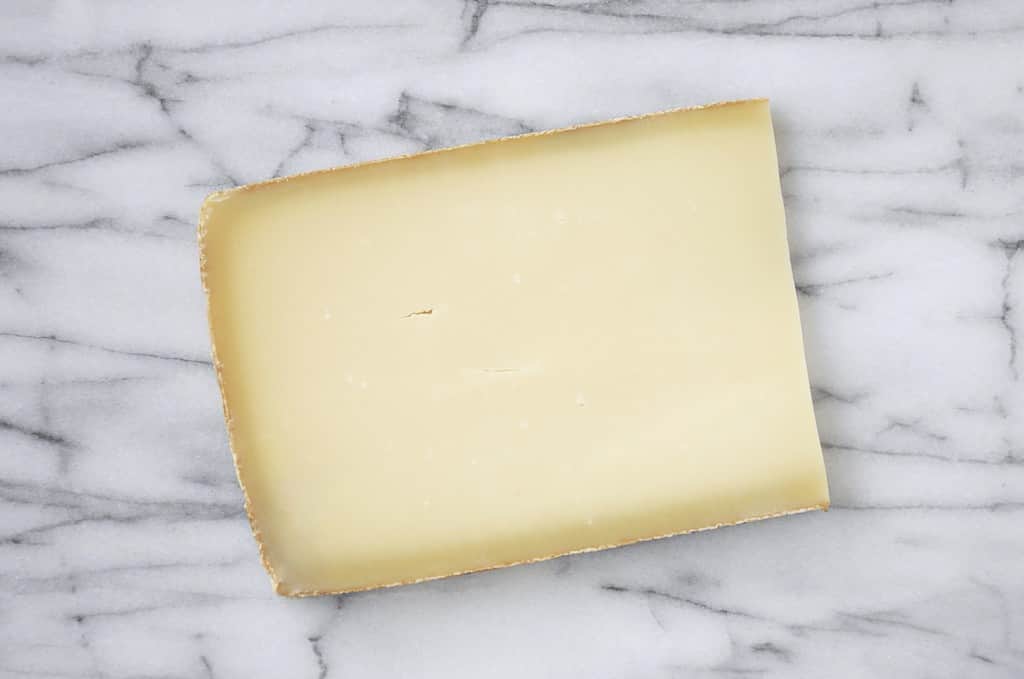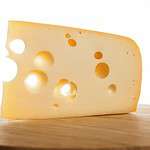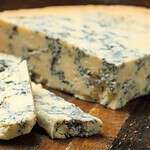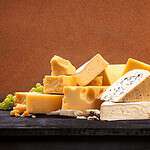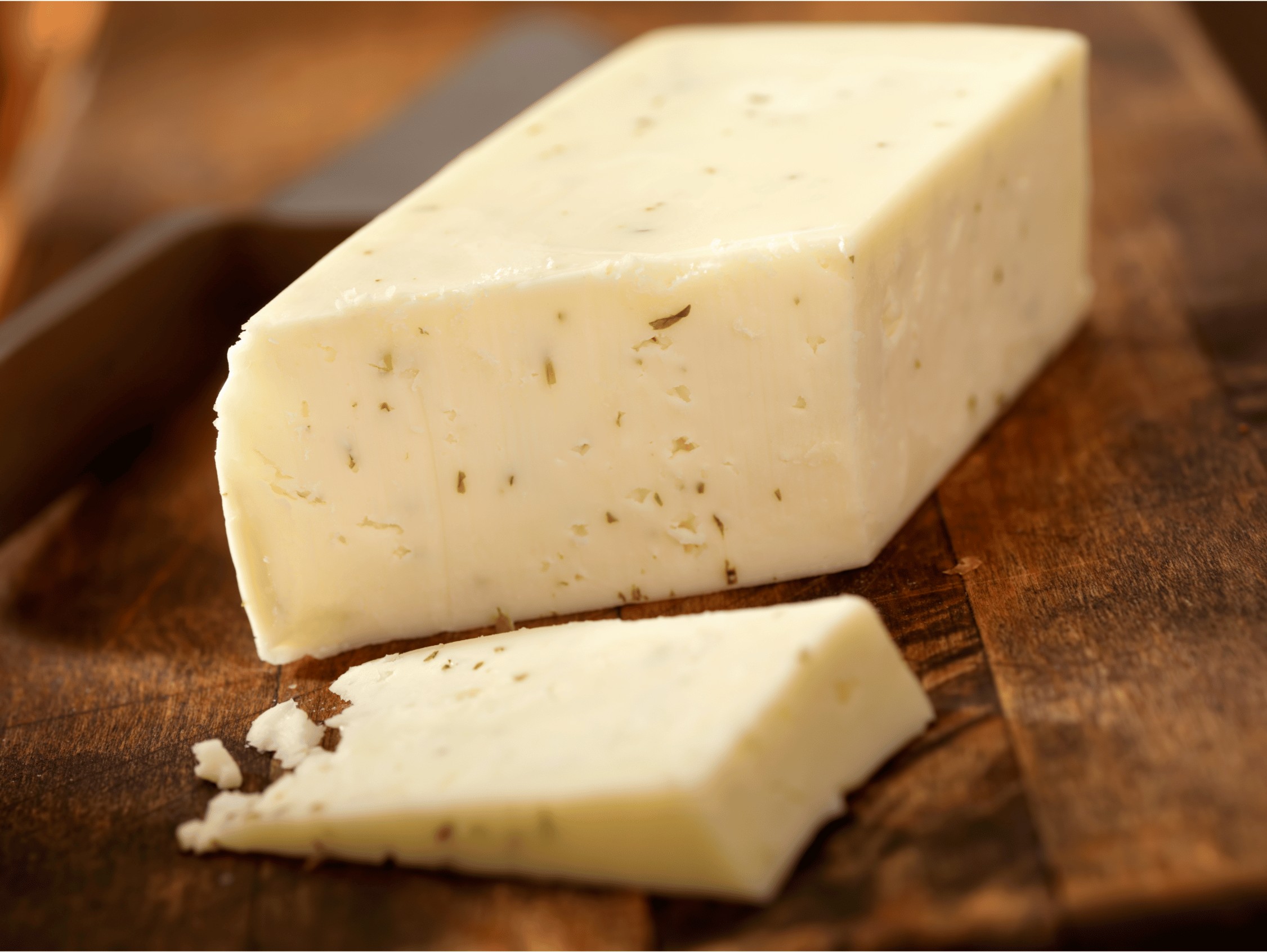Gruyere cheese is a hard yellow cheese that is named after the town of Gruyères in Switzerland. It is one of the most famous Swiss cheeses, renowned for its rich, creamy, slightly nutty taste. Made from whole cow’s milk, Gruyere has a savory but not very sharp flavor that becomes more pronounced with age. It’s characterized by the presence of small holes or ‘eyes’ formed during the fermentation process.

This cheese has a long history dating back to the 12th century and has played a significant role in the culinary traditions of Switzerland. Its production process remains relatively unchanged and preserves the authenticity that gives Gruyere cheese its distinctive identity. Gruyere is versatile in the kitchen, commonly used in fondue, baked dishes, soups, and gratins because of its excellent melting properties.
Key Takeaways
- Gruyere cheese is a distinctive Swiss cheese with a creamy, nutty flavor and a notable history.
- It has an essential role in Swiss culinary traditions and is valued for its melting qualities in cooking.
- The production of Gruyere cheese adheres to traditional methods to maintain its unique taste and texture.
History and Origin
Gruyere cheese boasts a rich heritage deeply rooted in the traditions of Switzerland. We recognize Gruyere as a paramount representation of Swiss cheesemaking craftsmanship, protected by legal standards that ensure its continued quality and reputation.
Swiss Roots
Gruyere cheese takes its name from the town of Gruyères in the canton of Fribourg, Switzerland. Its history dates back to the 12th century, a testament to the long-standing tradition of cheese production in this region. The fertile lands of Fribourg provide an ideal environment for dairy farming, which has been the cornerstone for Gruyere cheese’s consistent quality and flavor.
Maison du Gruyère is a notable location in Switzerland that intricately ties to the history of Gruyere cheese. It is not only a focal point of cheese production but also serves as an experiential museum illustrating the traditional means by which this celebrated cheese is crafted.
Appellation Protections
Swiss Gruyere cheese is under the protection of the Appellation d’Origine Contrôlée (AOC) —a term originally signifying a French certification granted to certain French geographical indications for wines, cheeses, butters, and other agricultural products. After the establishment of the Appellation d’Origine Protégée (AOP) standards by the European Union, the designation for Gruyere cheese transitioned to confirm these higher EU standards. This implies that only cheese that fulfills the rigorous criteria, including being produced in designated areas of Switzerland, can legally be called Le Gruyère Switzerland AOP.
Our acknowledgment of these protections is significant because they preserve not only the techniques and regional specificity of Gruyere cheese production but also safeguard its future by ensuring that these standards are maintained across generations. These appellation protections are a pledge of quality, genuineness, and authenticity for every wheel of cheese that bears the name Gruyere.
Cheese Production
In gruyère cheese production, we rely on traditional methods that include specific ingredients and aging conditions, ensuring unique flavor profiles and textures.
Ingredients and Process
Gruyère cheese starts with high-quality raw milk, sourced from cows grazing in specific regions. Our cheesemaking process involves heating the milk in a copper vat, where it’s treated with starter cultures and rennet to coagulate the milk into curds and whey. The curds are then cut, helping to develop gruyère’s characteristic grainy texture.
| Ingredient | Purpose in Cheesemaking |
|---|---|
| Raw milk | Base for the cheese |
| Starter cultures | Ferment lactose into lactic acid |
| Rennet | Coagulates the milk |
The curds are pressed into molds, where they begin to take their final shape. Excess whey is drained, concentrating the signature flavor of gruyère cheese.
Aging and Maturation
After shaping, we submerge the cheeses in a brine solution, which starts the aging process and contributes to flavor development. The cheeses are then transferred to maturation facilities, where they are placed on wooden boards. Here, they are carefully aged under controlled conditions, where moisture distribution is paramount for the cheese’s development.
- Aging: 5 to 18 months
- Environment: Humidity and temperature controlled
Throughout maturation, the rinds are regularly rubbed to promote even aging and flavor distribution. This careful aging is what endows gruyère with its distinct savoriness.
Regional Variations
Gruyère cheese reflects the terroir of its region. Depending on where we produce it, variations in bacteria in the milk, due to differences in cows’ diet and local microflora, can slightly alter the taste and texture. Also, we note that unpasteurized milk from different regions contributes to the unique qualities of our local gruyère varieties.
Characteristics

In this section, we examine the distinct flavor profile and texture that make Gruyère cheese an exquisite choice for connoisseurs and casual cheese lovers alike.
Flavor Profile
Gruyère cheese boasts a complex flavor that evolves as it ages. When young, its taste is predominantly sweet and creamy, growing increasingly savory and salty as it matures. Our palate can detect a rich nutty flavor, reminiscent of the quality found in fine Alpine cheeses. This hard cheese has been appreciated for its deep and resonant flavour which carries hints of fruitiness when properly ripened.
Texture and Appearance
The texture of Gruyère is characteristically firm yet supple, allowing for a pleasing tactile experience. The surface of this hard cheese is typically smooth and features a natural tan rind, indicative of its careful aging process. As it matures, small eyes or small holes may develop within the cheese, but unlike some other varieties, Gruyère does not exhibit large openings. The body of the cheese can range from slightly grainy to a smoother, creamy texture, which demonstrates its nutritional richness, including a good source of calcium. Additionally, we acknowledge the occasional presence of tiny cracks, a sign of well-aged Gruyère’s character and authenticity.
Culinary Uses

Gruyere cheese holds a venerable position in culinary traditions, celebrated for its versatility in both cooking and baking. Its renowned melting qualities make it an indispensable ingredient in a variety of classic and contemporary dishes.
Traditional Recipes
We find Gruyere cheese at the heart of many French dishes. Its rich, creamy texture and distinctive flavor profile enhance the taste and presentation of these classics:
- Fondue: A quintessential Swiss dish where Gruyere is often melted into a communal pot and savored by dipping bread cubes.
- French Onion Soup: Gruyere is the traditional choice for topping this savory soup, melted to perfection under a broiler.
- Quiche: Adds depth and richness to this baked custard pie, especially in the well-known Quiche Lorraine.
- Croque Monsieur: A Parisian café staple, this toasted sandwich features Gruyere as a key melty component.
- Cordon Bleu: In this dish, Gruyere provides a smooth, melted filling within breaded chicken or veal.
These dishes exemplify Gruyere’s role as both a table cheese and a melting cheese.
Modern Applications
In modern cuisine, our use of Gruyere cheese has expanded into an array of inventive dishes, leveraging its melting abilities and robust flavor:
- Macaroni and Cheese: Elevates this comfort food with a sophisticated twist.
- Grilled Cheese Sandwich: When paired with quality bread, Gruyere transforms this simple sandwich into gourmet fare.
- Pasta and Salads: Incorporating Gruyere adds a nutty, salty taste that complements both warm and cold dishes.
- Cheese Platter: It stands out on a cheeseboard, especially when paired with fruits and nuts.
- Baking: From savory pastries to gratins, Gruyere’s meltability and taste improve the final product.
In all these applications, the characteristics of Gruyere cheese play a crucial role in the success of the dish, with sites like The Spruce Eats regularly featuring recipes and tips that highlight its broad utility in cooking and baking. Whether it’s through creating a molten center for a raclette or enhancing the flavor of a simple salad, Gruyere remains a fundamental ingredient in both traditional and modern recipes.
Pairings and Serving

In choosing pairings for Gruyère cheese, we focus on complementing its creamy, nutty characteristics with suitable beverages and accompaniments that either contrast or enhance its rich flavors.
Wine and Beverage Combinations
When considering wine pairings, we find that Chardonnay—with its bright acidity—balances the dense texture of Gruyère. On the other hand, a white wine that emphasizes a fruity profile can lift the subtle sweet notes inherent in the cheese. For those preferring a beer, a Bock beer, with its robust malt and slight sweetness, pairs beautifully with the nuttiness of Gruyère.
| Beverage Type | Specific Pairing Example |
|---|---|
| White Wine | Chardonnay |
| Beer | Bock Beer |
Accompaniments
In terms of edibles, we find that fruits with a bit of acid like apples and grapes can cut through the richness of Gruyère, creating a refreshing balance. For a more savory pairing, crusty bread and garlic can be ideal, particularly when the Gruyère is melted, as it harmonizes with the cheese’s creamy texture and bold flavors.
- Fruits:
- Apples
- Grapes
- Savory:
- Crusty bread
- Garlic
Gruyère also works well with other mountain cheeses, such as Comté or Raclette, for a melange of Alpine flavors. The combination of these cheeses offers a range of textures and tastes that are perfect for an indulgent cheese platter.
Varieties and Related Cheeses

We can explore a selection of cheeses that are either variants of Gruyère or share similar characteristics, ranging from texture to flavor profile. Here, we focus on cheeses that enthusiasts of Gruyère might find particularly appealing or intertwined in its rich cheese-making tradition.
Similar Cheeses
- Emmental (Emmentaler): Often known for its distinctive holes, this Swiss cheese features a mildly nutty flavor. It shares many similarities with Gruyère, including the process of fabrication, but tends to have a slightly firmer texture and larger eyes—the holes in the cheese.
- Beaufort: Hailing from France, Beaufort possesses a smooth, creamy texture with a rich, buttery taste. It is another alpine cheese like Gruyère, with a characteristic concave heel, and is often used in similar culinary applications.
- Comté: This French cheese from the Jura region is often compared to Gruyère due to its complex, nutty flavor. It has a denser texture and is known for its profound depth of flavor, which can include hints of chocolate, roasted nuts, and butter.
- Jarlsberg: This Norwegian cheese is milder and sweeter than Gruyère but still features the familiar large holes and a semi-soft texture. Its nutty and slightly sweet taste makes it a popular addition to sandwiches and cheese platters.
Local Types
- Swiss Gruyère: The original Gruyère, produced in the canton of Fribourg, is creamy and slightly grainy, with a distinctive taste that ranges from sweet to salty and often encompasses a range of fruity, nutty, and earthy notes.
- French Gruyère: Compared to its Swiss counterpart, French Gruyère can have holes and typically presents a slightly different flavor profile, often described as creamier with a more muted nuttiness.
Our overview shows that whether you are drawn to the nutty qualities of Gruyère or its smooth texture, numerous cheeses share these attributes, making the family of alpine cheeses rich and diverse.
Buying and Storage
When purchasing Gruyere cheese, it’s crucial to focus on its age and quality. At the cheese counter, we ensure that the cheese’s condition and storage are up to par to maintain its exquisite flavor and texture.
Selection Tips
- Aged Cheese: We look for Gruyere that is properly aged. A good Gruyere should be aged for about 6 months to a year. A Gruyere labeled as “réserve” is often aged longer and will have a more pronounced flavor.
- Cheese Counter Quality: We assess the conditions at the cheese counter. The cheese should be well cared for, with proper temperature control and protection from overpowering odors which could taint the cheese.
Optimal Storage Methods
- Temperature: Gruyere should be stored at a temperature between 35°F and 45°F (1.7°C – 7.2°C). We use a refrigerator for optimal storage conditions.
- Humidity: We maintain a humidity level in the fridge of around 85% to prevent the cheese from drying out.
- Wrapping: To preserve its quality, we wrap Gruyere in cheese paper or wax paper. This allows the cheese to breathe without absorbing other smells from the refrigerator.
- Duration: For best quality, consume Gruyere within 3 to 4 weeks once we bring it home. Always check for any signs of spoilage before use.
Nutritional Information
When we examine the nutritional profile of Gruyere cheese, we find that it provides a significant amount of calcium and other nutrients. Typically, a 1-ounce (28 grams) serving of Gruyere cheese contains the following:
- Calories: Approximately 117
- Protein: 8.5 grams
- Fat: 9 grams
- Carbohydrates: Less than 1 gram
- Calcium: 287 mg
The calorie count in Gruyere is comparable to other hard cheeses, and it is a high-protein food choice. The high calcium content is advantageous for bone health. Moreover, our Gruyere cheese is a good source of essential nutrients, including phosphorus, vitamin A, and certain B vitamins.
Here is a breakdown in a clearer format:
| Nutrient | Amount per 1 oz (28g) |
|---|---|
| Calories | 117 |
| Protein | 8.5g |
| Fat | 9g |
| Carbohydrates | <1g |
| Calcium | 287mg |
We must note that while Gruyere cheese is nutritious, it’s also relatively high in fat and sodium. Those who are monitoring their calorie intake or managing health conditions that require watching sodium consumption should consider these factors. As with any cheese, enjoying Gruyere in moderation is key to maintaining a balanced diet.
Frequently Asked Questions
We’ve compiled a list of frequently asked questions to help you understand the nuances of Gruyère cheese.
How can one discern the distinct taste of Gruyère cheese?
Gruyère cheese is known for its creamy, nutty flavor that can sometimes develop a slightly earthy taste. Its complexity intensifies with age.
What are the optimal substitutes for Gruyère cheese in recipes?
Emmental or Jarlsberg can be used as substitutes for Gruyère, offering a similar texture and flavor profile. Beaufort or Comté are also suitable alternatives.
In what ways does Gruyère differ from Swiss cheese?
Gruyère is a type of Swiss cheese with a distinct flavor and a denser texture. Swiss cheese typically refers to American Swiss cheese, which is milder with larger holes.
What characteristics make Gruyère cheese unique?
Gruyère has a smooth meltability and complex flavors ranging from sweet to salty, which stand out among other cheeses. Its unique taste develops from the high-quality milk of cows grazing on Swiss pastures.
Cheeses like Comté, Beaufort, and Emmental, have similar flavor profiles and textures, making them close relatives to Gruyère in the cheese family.
Can you provide some savory recipes that include Gruyère cheese?
One classic savory dish showcasing Gruyère is a traditional fondue, where the cheese’s melting qualities shine. Another popular recipe is the French Croque Monsieur sandwich, which uses Gruyère for its rich and delicious topping.

